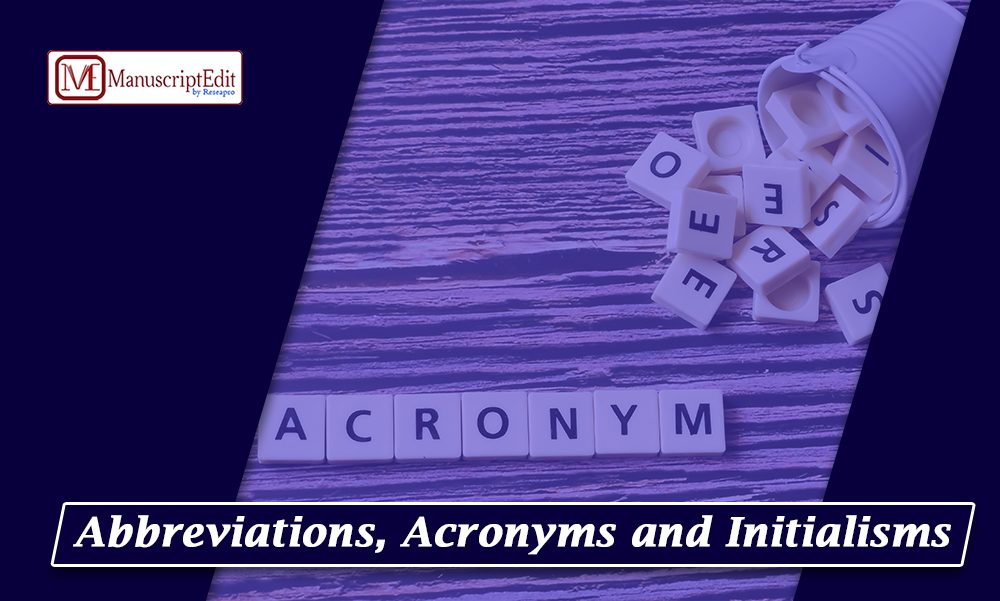|
Getting your Trinity Audio player ready...
|
A common understanding for using abbreviations or acronyms is to reduce the word count or make sentences more legible. They help us understand manuscripts or any academic writing easily and prevent the repetition of words. In scientific writing, experts take it for granted as they overuse abbreviations and acronyms as and when necessary.
What are abbreviations, acronyms and initialisms?
Abbreviations are short forms of words or phrases. Acronyms and initialisms are a type of abbreviations that differ in how we pronounce them. Acronyms combine the first letter of every word in the phrase and can be spelled as a distinct word. Some examples include AIDS (Acquired Immune Deficiency Syndrome), ELISA (Enzyme-Linked Immunosorbent Assay), and ANOVA (Analysis of Variance).
Initialisms are a series of first letters of a phrase spelled as individual letters distinctly, such as DNA (Deoxyribose Nucleic Acid) and RNA (Ribonucleic Acid).
How can these be used?
It is often recommended to use the unabbreviated form if the abbreviation does not occur regularly in the research manuscript. Specific instructions on how to introduce, define or use the abbreviations are provided in many journals. The Chicago Manual of Style mentions using abbreviations if a phrase occurs five or more. Non-standard abbreviations must only appear three times in the article, according to the PLOS ONE journal’s guidelines.
Types of abbreviations
Two types of abbreviations, such as standard and non-standard, are usually written in scientific writing.
Standard abbreviations:
These are widely accepted ones that can be used directly without any definitions or full forms in the manuscript. For example, units of measurement like m for meter, k for kilogram, and s for second are standard types.
Non-standard abbreviations:
These are field- or subject-specific and require full forms or definitions when written in any manuscript. For example, CFD stands for computational fluid dynamics, commonly applied in mechanical or civil engineering fields.
Tips to use in scientific writing: When?
- It is essential to use abbreviations while mentioning the definition in the first mention.
- More than one widely known abbreviation could be spelled specifically to avoid confusion. For example, CD can mean ‘cluster of differentiation’ or ‘circular dichroism.’
- Latin abbreviations can be used commonly as per the convention, such as, g. (exempli gratia), i.e. (id est), or et al. (et alii).
- Journals allow using a non-standard abbreviation more than twice in the abstract.
- A non-standard acronym should also be defined both in the abstract and again in the main body.
- Readers typically use the title and keyword list while browsing for articles; hence experts suggest against using acronyms.
- It is better to characterize the acronym/abbreviation in the figure subtitle or legend that aids the readers to prefer scanning the figures first before going through the manuscript.
- Authors are advised not to initiate a sentence with an abbreviation.
It is always advisable to follow instructions on conventions for abbreviations and acronyms before using them.
Ms. Swati M




